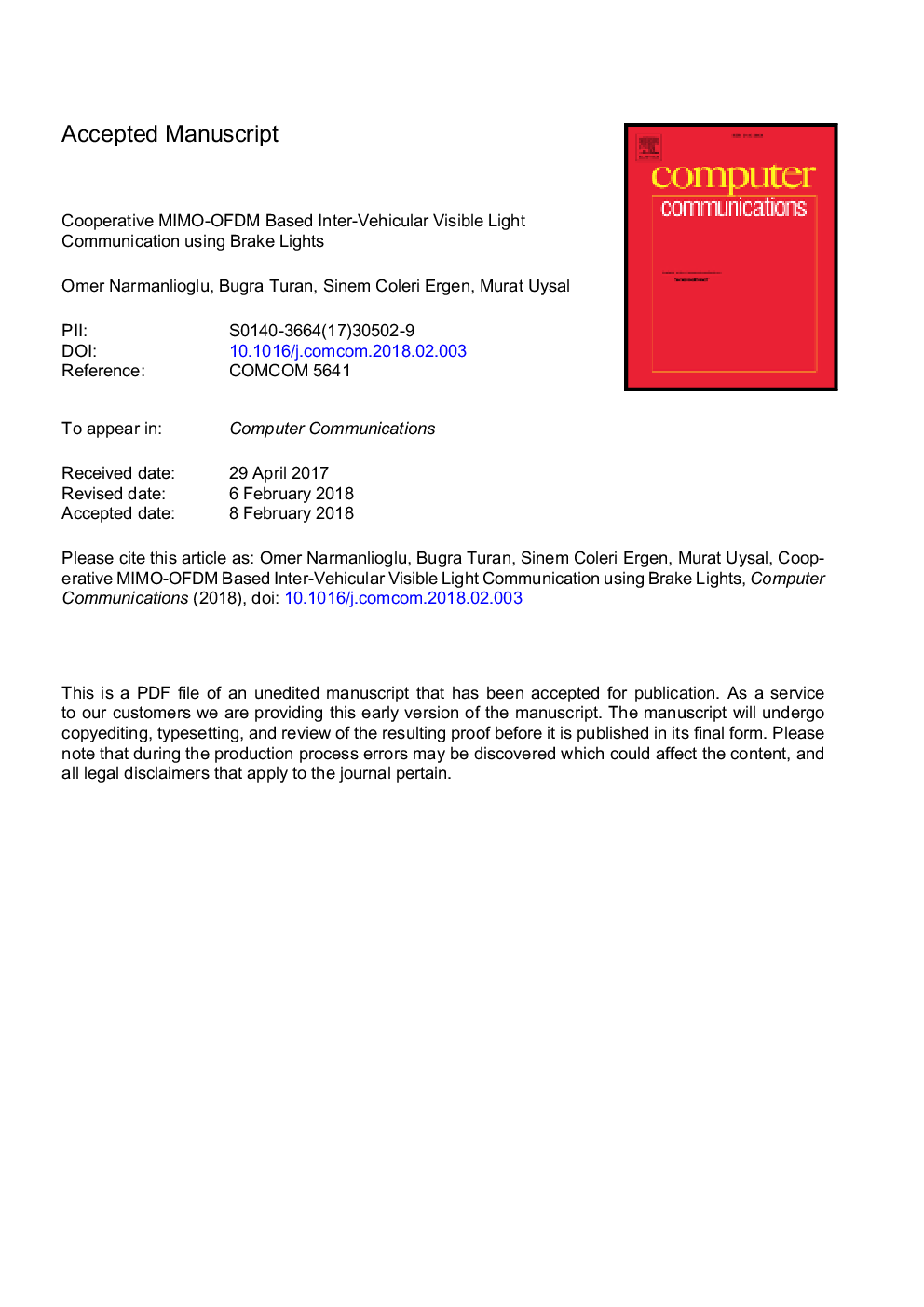| Article ID | Journal | Published Year | Pages | File Type |
|---|---|---|---|---|
| 6880035 | Computer Communications | 2018 | 14 Pages |
Abstract
Inter-vehicular connectivity to enhance road safety and support highly autonomous driving is increasingly becoming popular. Despite the prevalent works on radio-frequency (RF) based vehicular communication schemes, visible light communication (VLC) is considered to be a promising candidate for vehicular communications due to its low complexity and RF interference-free nature. Deployment of multiple light emitting diodes (LEDs) enables multiple-input multiple-output (MIMO) transmission in the context of vehicular VLC. This paper investigates applicability of both point-to-point (direct) vehicular VLC and decode-and-forward relaying based cooperative vehicular VLC including relay terminals between source and destination terminals to enhance road safety based on real world measurements. We consider direct current biased optical orthogonal frequency division multiplexing (DCO-OFDM) based MIMO transmission scheme and evaluate the performances of different MIMO modes including repetition code (RC) and spatial multiplexing (SM), different modulation orders with different transmitter-receiver selection mechanisms to support line-of-sight (LoS) and beyond LoS multi-hop vehicular VLC. The results reveal that the selection of the closest transmitters to the receivers provides better performance due to high signal-to-noise-ratio requirements for RC mode whereas SM suffers from channel correlation. Usage of all possible transmitters does not always yield better performance due to the power division at the transmitter side. On the other hand, the performance of RC shows more degradation on higher-order modulations that are required to yield the same throughput with SM. Therefore, considering the higher order modulation requirement for RC based VLC, SM is concluded to be a favorable MIMO scheme for cooperative vehicular VLC. We further demonstrate the benefits of multi-hop transmission over direct transmission with respect to different number of relay vehicles as a consequence of varying inter-vehicular distances between source and destination vehicles.
Related Topics
Physical Sciences and Engineering
Computer Science
Computer Networks and Communications
Authors
Omer Narmanlioglu, Bugra Turan, Sinem Coleri Ergen, Murat Uysal,
